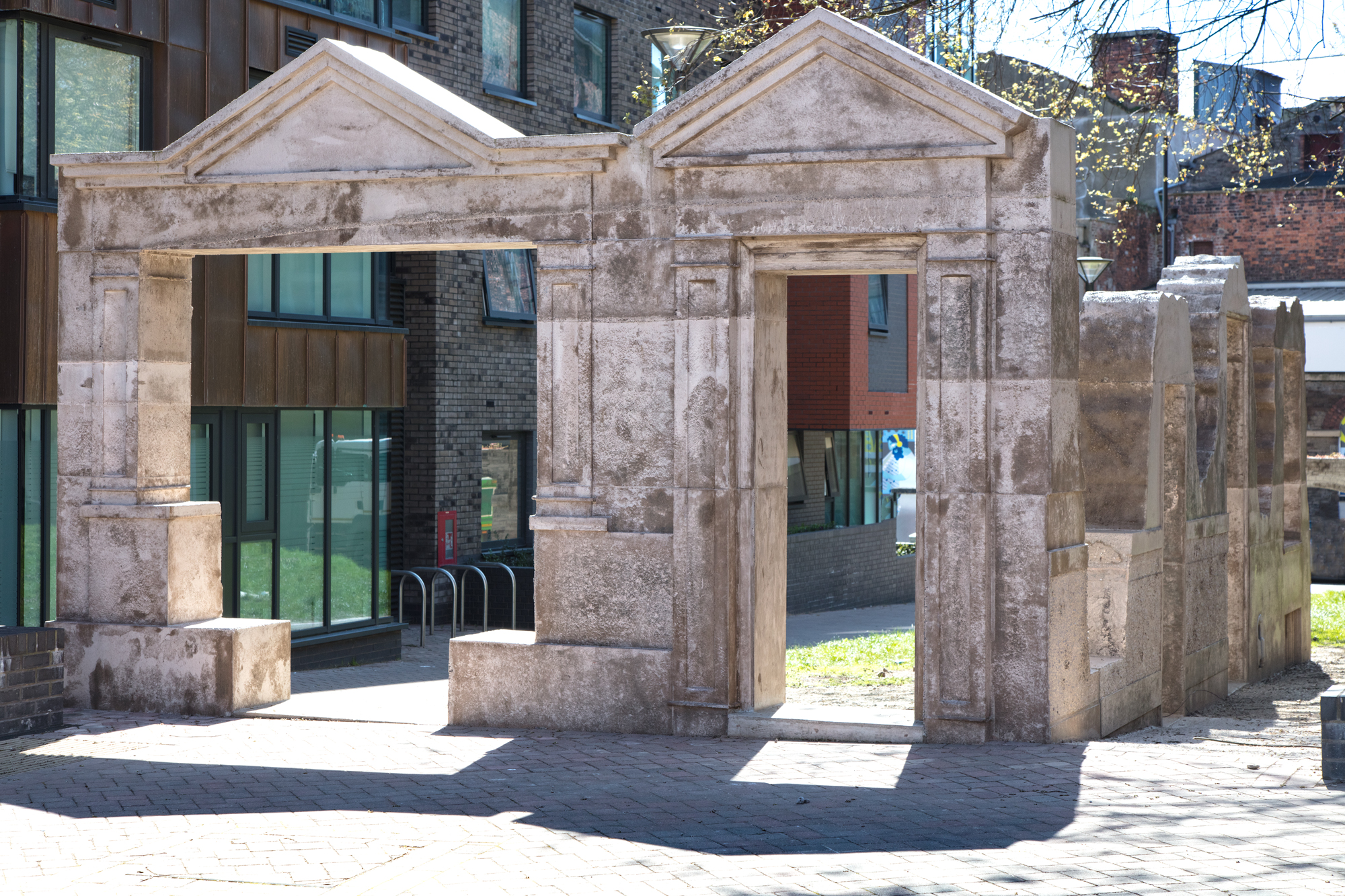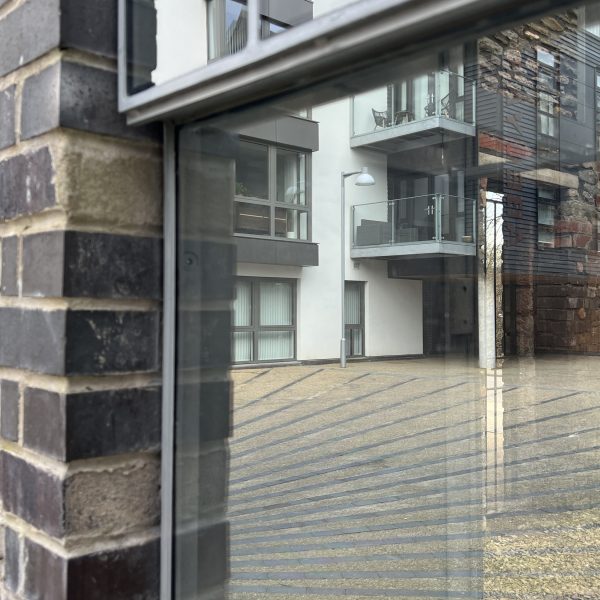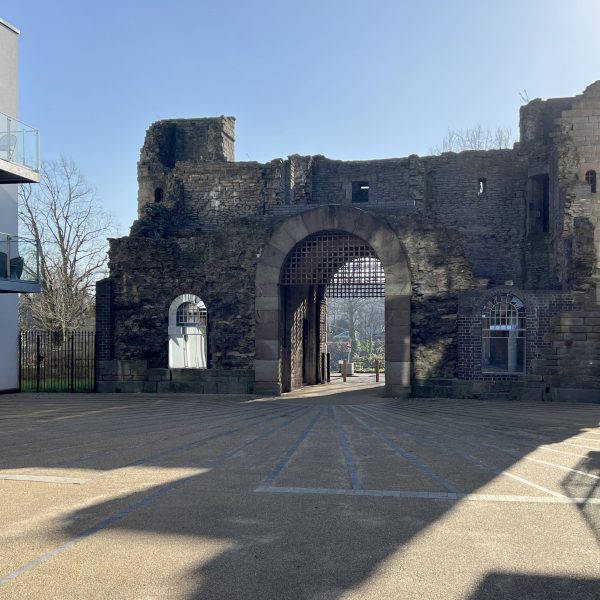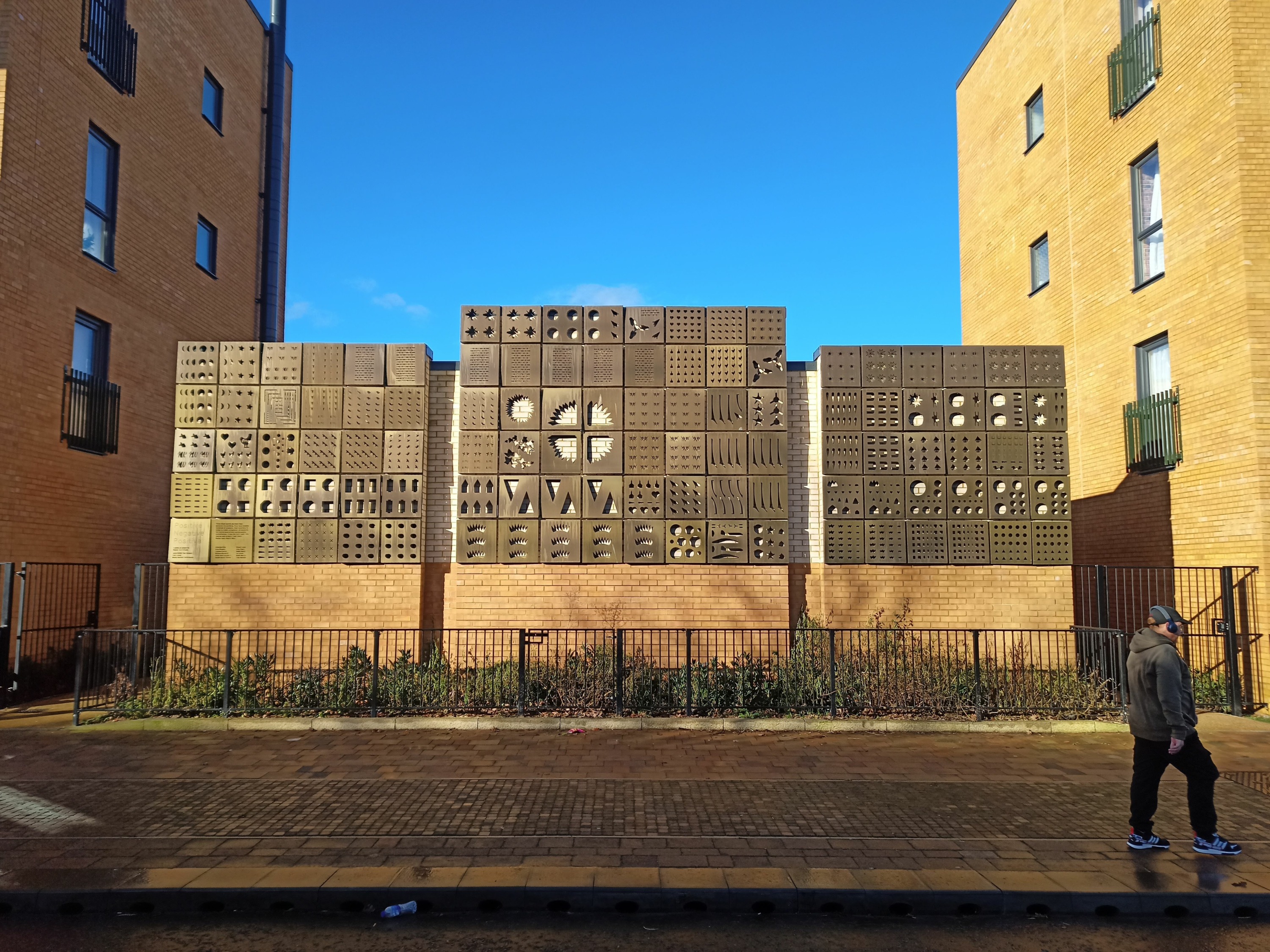
Synopsis
The design and realisation by artist Juliet Haysom of two galvanised steel structures glazed with high-reflection glass, based on original 1816 designs for the Bristol New Gaol and installed within the restored Gaol Gate at Wapping Wharf.

“My project resurrects lost aspects of the site’s historic buildings, and aims to invite consideration of the role and act of viewing within public space.”Juliet Haysom


The 1816 designs for the Bristol New Gaol formalised structures of power by facilitating centralised surveillance and control over every aspect of the prisoners’ lives. This is based on Jeremy Bentham’s idea of the panopticon, in which control is maintained by vigilant observation.
Artist Juliet Haysom has created a pair of mirrored interventions in the restored original gaol gate that relate the historic and contemporary approaches to surveillance within the site when it was a functioning gaol.
The building’s extraordinarily well-preserved drawings are in the collection of the Bristol Records Office and they formed the basis of Juliet Haysom’s research and designs.
“My proposal began by re-opening window apertures within the historic Gaol Gate. I then introduced glazed steel-frame structures based on the gaol’s original designs of the cell walls and windows. The cell’s opaque elevation is thereby translated into a transparent and mirrored surface, which reflects the new public realm while simultaneously allowing views into the newly-conserved ruin. My project therefore resurrects lost aspects of the site’s historic buildings, and aims to invite consideration of the role and act of viewing within public space,” Juliet Haysom.


